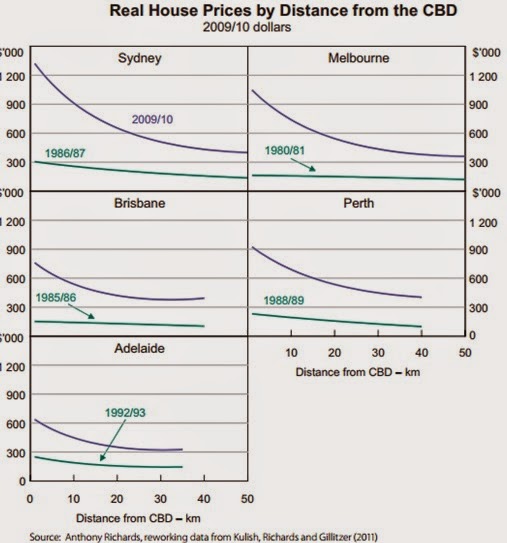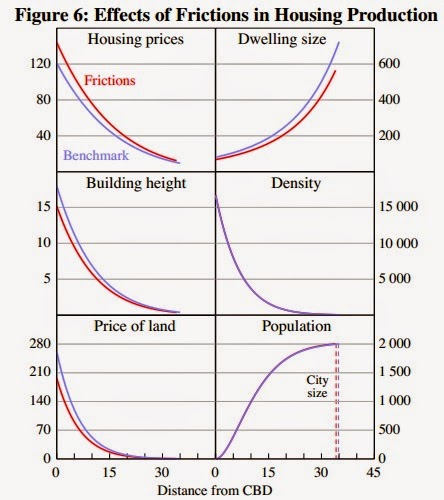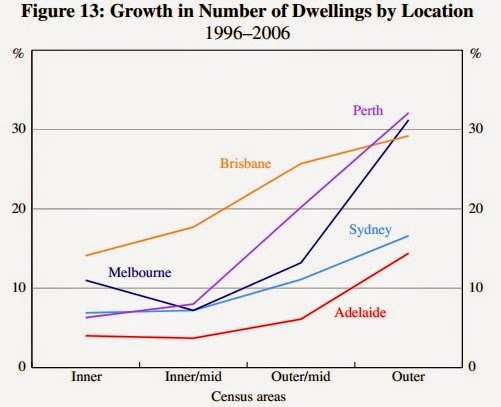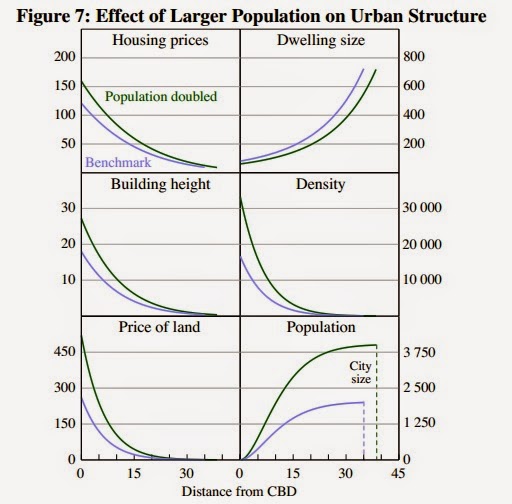Some time ago I looked here at the "bid rent curve" in Australia and why house prices continue to rise fastest in suburbs close to Australia's major city centres.
The Reserve Bank carried out its own detailed research into house prices to understand why this happens and why it has continued to happen over the past 30 years.
Their findings, as highlighted today over at the great Business Spectator by Alan Kohler, were nothing short of spectacular.
Not only are house prices rising at a faster pace in inner city areas, they are doing so at an ever faster pace.
As a result the difference between inner and outer capital city prices grows ever wider, thus disproportionately benefiting homeowners and property investors who own real estate in the inner city suburbs.
Kohler took the trouble to speak with one of the preparers of the report and found confirmation that the situation has continued to worsen of late.
Perhaps unsurprisingly, this has been particularly the case in the most populous cities, being Sydney Melbourne, but also Perth, Brisbane and Adelaide.
In short, the prime location property located close to the CBD consistently outperformed everywhere - in every capital city.
This is already fairly obvious to residents of the large capitals as inner city prices continue to power ahead.
But why exactly does it happen?
Several reasons.
One of those reasons relates to transport and infrastructure.
"The reason inner-city prices have gone up much faster than the outer suburbs, and that capital city house prices generally have almost doubled in 10 years, with Sydney prices in particular surging 35 per cent in three years, is because a lack of infrastructure investment has made it unviable to live further out.
Australia is a big country; it should have a network of fast and efficient trains linking widespread suburbs, but instead we are crowding into the inner suburbs and paying exorbitant prices so we don’t have to commute more than hour to work each day.
At least Melbourne is a fairly extensive rail network to apply the technology to, when governments eventually get around to it: Sydney and Brisbane just need more trains."
Which is pretty much an accurate summation.
There is also a generational shift at work, as Australians dig deep in their pockets to live in convenient locations.
And, thirdly, investors own a high proportion of inner city stock - and there are ever more investors in Australian property competing for a limited supply of prime land.
Friction in housing production
The Reserve Bank also noted "frictions" on housing production which have added disproportionately to the cost of producing housing in areas close to the city.
I blogged about the reasons why this happens in inner suburbs in particular in much more detail here.
Site remediation costs in brownfill areas are becoming increasingly prohibitive to development as land prices increase and regulations more stringent.
Greenfield sites by comparison are very easy to develop and provide ready substitutability for outer suburban dwellings.
Crucially, the percentage growth in the number of dwellings is much, much greater in outer suburban locations - supply far more comfortably meets demand the further from the city one travels.
This has also proven to be true in every major capital city.
Finally, therefore, as the population of Australia's cities increase, the Reserve Bank found that this will continue to disproportionately force up the price of both land and housing prices close to the CBD.
And not only by a small margin, but by a factor of many.
Much of this is fairly self-evident, but the Reserve Bank's detailed research re-confirms what we already knew to be true - property prices close to the city have risen substantially faster over time, and as the population increases, so they will continue to do so.



















